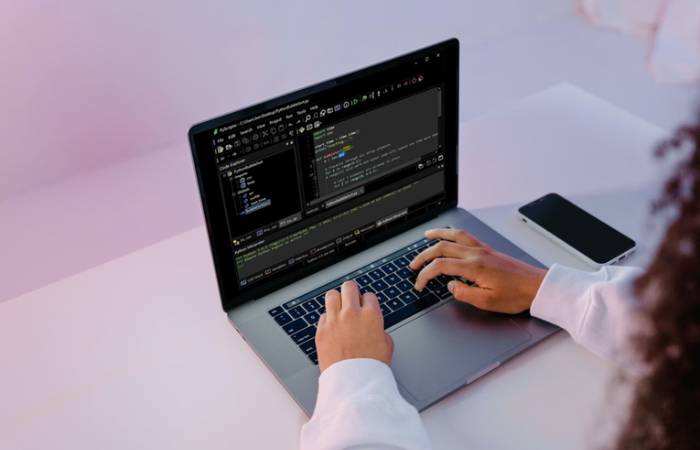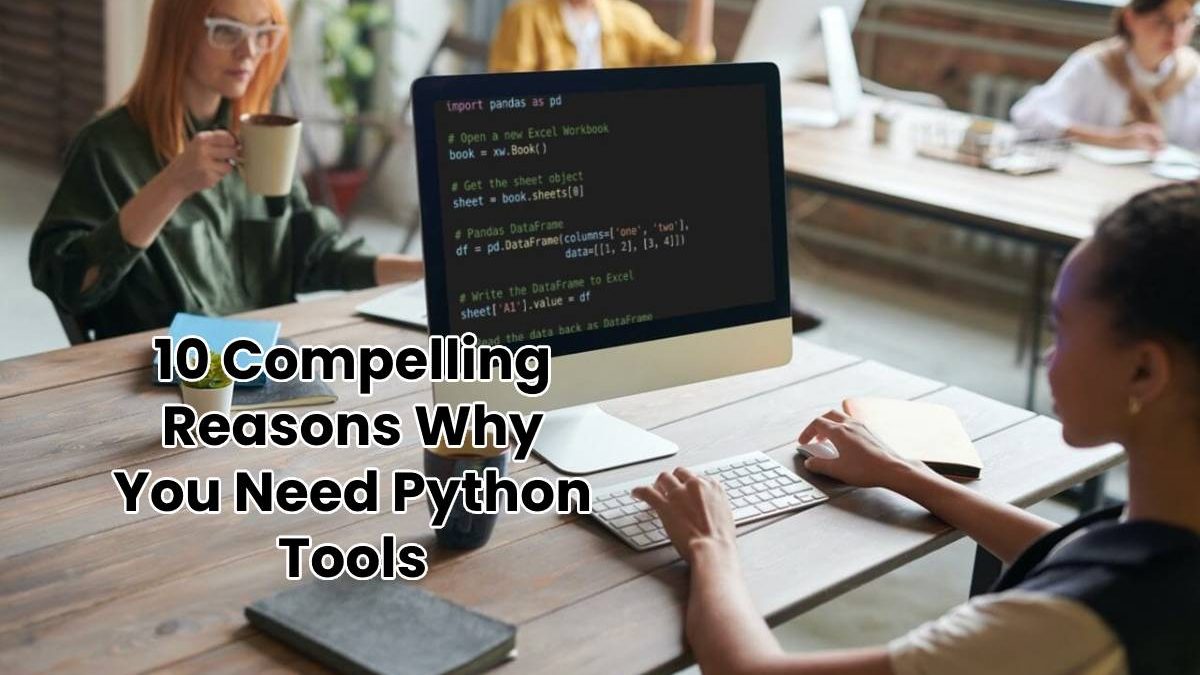10 Compelling Reasons Why You Need Python Tools
Despite the fact that there are a plethora of programming languages available for developers to employ when creating websites or applications, Python comes out on top in terms of usefulness and popularity. It is widely preferred by programmers over other programming languages, and its popularity is only anticipated to rise in the future, based on current statistics. Python has a natural and approachable interface with simplified syntax that is easy to learn and understand for new programmers. Python scripts may be produced and performed significantly faster than any other programming language due to their ease of understanding and use.
Python is the preferred option for data scientists due to its appealing interface and extensive library and resource offerings. One of the reasons for its popularity is due to the availability of extensive Python tools, which enhance its functionality drastically. Python is fast, natural, and ideal for performing repetitive tasks or manipulating data. Read on to find out more about Python tools and why do you need them to enhance productivity and workflow.
Table of Contents
Why Are Python Tools an Absolute Necessity?
Python tools can cover a wide range of needs and functionalities that a variety of users will find value in. When used properly, they can greatly enhance Python’s existing characteristics and functions, so developers are facilitated to a greater extent. Let us discuss some of them below.
How Does Integrated Unit Testing Ensure Enhanced Productivity?
One of the primary benefits of using Python tools is that they offer optimal productivity. Although most options don’t have the necessary features for this, PyScripter (sponsored by Embarcadero) is a breakthrough solution that allows you to boost your productivity by running scheduled unit tests, so you don’t have to worry about problems or jeopardize your security.
Furthermore, it is both free and open-source, as well as being extremely lightweight. It is the perfect sweet spot for novice and expert developers alike due to having the right balance of ease of usage and professional features. Its lightweight infrastructure ensures that there are no speed or practicality issues, and your device runs smoothly without any interruptions. PyScripter is crucial to your cause.
Why Remote Debugging Enables Efficient Troubleshooting?
When it comes to online or application development, developers and programmers despise defective software or security breaches. Such flaws and problems are widespread in Python and other programming languages; therefore, Python tools may help you avoid them and guarantee that your application runs smoothly. While most tools lack specific Python debugging capability, Pyscripter takes things a step further by offering remote debugging. You may simply debug a defective code that is running on a separate machine using this capability, which allows you to analyze and troubleshoot faults in the code in real-time.
This is commonly accomplished by establishing a connection between the remote-running program and your development environment. Developers dread that conventional debugging and remote dubbing can save them enormous time and wasted resources.
Why is Syntax Checking Crucial?
Syntax checking is critical to your cause since it assists you in identifying potential faults and issues in a program’s code, namely Stylistic or programming mistakes. They draw attention to code that deviates from a programming language community’s best practices.
Because PyScripter checks for code completion as well as syntax checking as you type, you can be certain that you will never have to deal with erroneous code. It not only allows for split view file editing but also allows for side-by-side file editing. You may pick from a large number of parameterized code templates, as well as custom code. Print a preview of the Python code, as well as syntax-highlighted Python code.
How Integrated Python Debugging Reduces Semantic Errors?
Although syntactic faults are relatively simple to identify and correct, semantic errors are far more difficult to correct than their syntactic counterparts. On the other hand, semantic mistakes arise when your code runs but produces incorrect results.
While print statements may be used to watch code execution and find problems, this is only true for shortcodes. You will need to perform debugging to totally eradicate issues, and PyScripter is your only option. It has the ability to see variables and watch windows, as well as remote and thread debugging. In addition to this, you can run or debug files without having to save them, along with the option to carry out post-mortem analysis to figure out best practices and potential bugs.
Why Does an Integrated Python Interpreter Increase Cost-Efficiency?
The Interpreter transforms a program written in a high-level language into machine-understandable code one line at a time during execution. There is no intermediate code written during the translation of the program to machine-readable code.
The high-level language program, also known as the Source program, must be interpreted each time the program is run. Because no intermediary code is generated, interpreters do not require a lot of memory. PyScripter includes a Python interpreter that provides automated code completion, call suggestions, and command history, as well as the ability to run scripts without previously storing them.
How Do Configurable IDE Options Enable Modern GUI?
You definitely need a customizable IDE to enable the construction of modern GUIs, and PyScripter delivers just that. It not only allows you to create code with syntax highlighting, language-specific auto-completion, and bug checking as you type. It has well-designed utilities for automating basic repetitive activities that demand a lot of time, as well as a debugger. All of these features pave the way for the creation of a single modern visual user interface.
What is the Role of a Built-in Code Explorer?
PyScripter is one of the few Python IDEs that allows you to see your source code as a tree. Globals, classes, functions, and local variables in the currently selected.py file are listed. By clicking on any of the identifiers in Code Explorer, you may quickly navigate to the desired location, variable, or class. Furthermore, right-clicking on blank space brings up a context menu that allows you to alphabetically order the Code Explorer, making it extremely helpful and practical.
How A Tabbed Workspace Aids Efficiency
An editor is an essential component of your editing process since it is where you type, alter and edit your code. It’s similar to a tabbed workspace in that it allows you to boost your productivity by simultaneously editing numerous files. It also includes features like code folding, IntelliSense, and context-aware indentation, which are essential for making the process go smoothly.
What is the Go-to Definition and Find References Functionality?
The hint shows a hyperlink that, when clicked, connects to the definition when the source code for the module where the identifier was defined is accessible. This gives you the ability to quickly locate where certain code parts are referenced across the codebase, as well as the ability to define a symbol and preview its declaration.
Why Split Editor Results in Synchronized Editing?
Despite the fact that most Python tools lack the ability to split edit, PyScripter allows you to split edit and work on separate views of the same file using either a horizontal or vertical splitting editor. Because both views edit the same text buffer and changes are reflected in both independent of cursor location or which view has mouse attention, synchronized editing is possible.

How Is PyScripter Functionally Superior?
PyScripter is the ideal partner for Python, enhancing its capabilities and making it easier to use. If you truly want to take your coding expertise and application development to the next level, you should surely have it.
It’s a well-designed, modern Python IDE that’s not only lightweight and utilizes little memory for optimal efficiency, but it’s also open-source and developed entirely in Delphi, with Python script extensibility. It is functionally better since it has developer-friendly features like Syntax Highlighting, an Integrated Python Interpreter, and a Remote Python Debugger.

